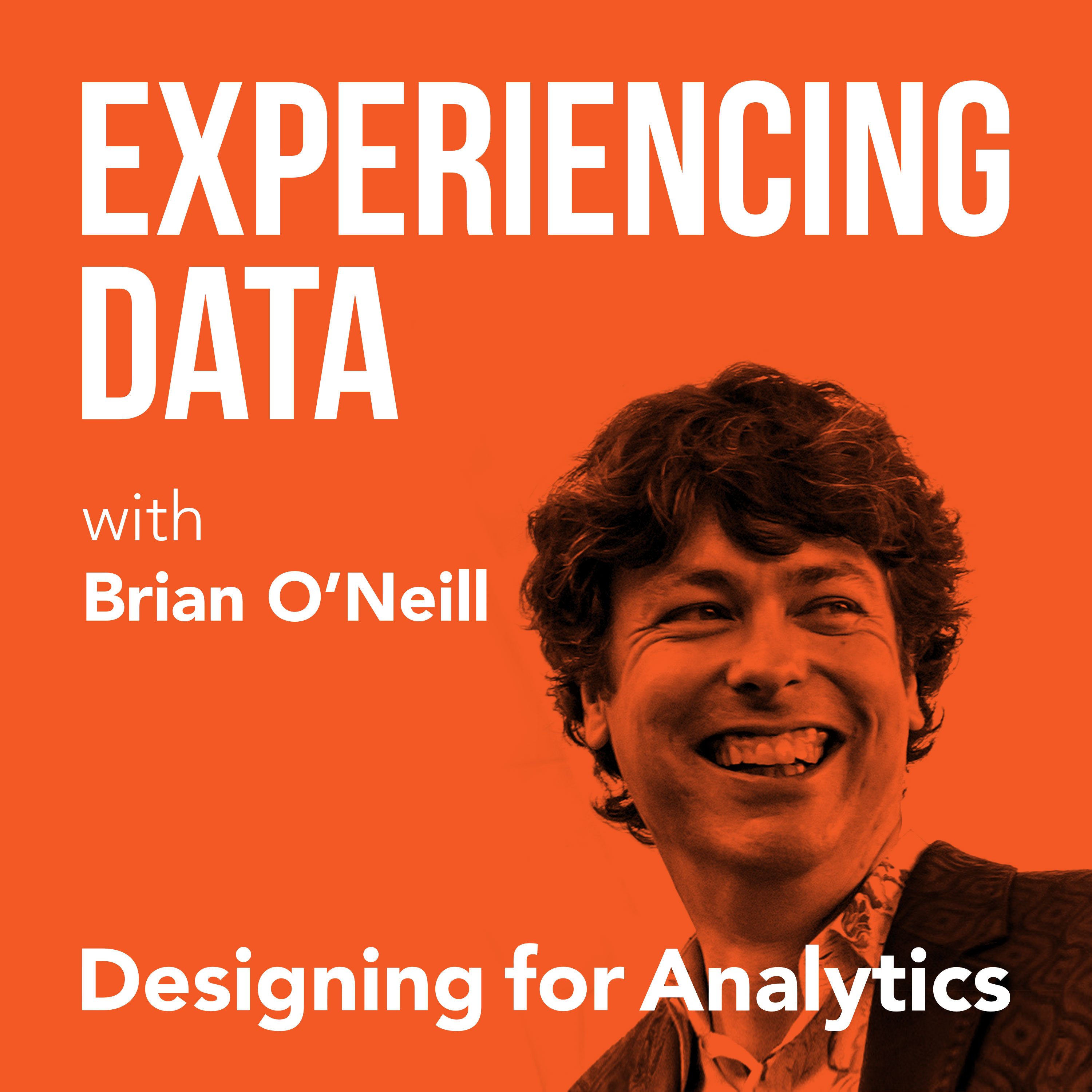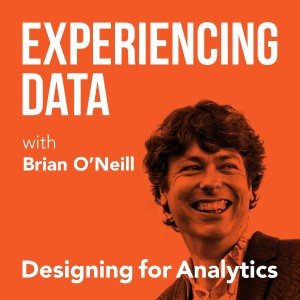

153.2K
Downloads
183
Episodes
Is the value of your enterprise analytics SAAS or AI product not obvious through it’s UI/UX? Got the data and ML models right...but user adoption of your dashboards and UI isn’t what you hoped it would be?
While it is easier than ever to create AI and analytics solutions from a technology perspective, do you find as a founder or product leader that getting users to use and buyers to buy seems harder than it should be?
If you lead an internal enterprise data team, have you heard that a ”data product” approach can help—but you’re concerned it’s all hype?
My name is Brian T. O’Neill, and on Experiencing Data—one of the top 2% of podcasts in the world—I share the stories of leaders who are leveraging product and UX design to make SAAS analytics, AI applications, and internal data products indispensable to their customers. After all, you can’t create business value with data if the humans in the loop can’t or won’t use your solutions.
Every 2 weeks, I release interviews with experts and impressive people I’ve met who are doing interesting work at the intersection of enterprise software product management, UX design, AI and analytics—work that you need to hear about and from whom I hope you can borrow strategies.
I also occasionally record solo episodes on applying UI/UX design strategies to data products—so you and your team can unlock financial value by making your users’ and customers’ lives better.
Hashtag: #ExperiencingData.
JOIN MY INSIGHTS LIST FOR 1-PAGE EPISODE SUMMARIES, TRANSCRIPTS, AND FREE UX STRATEGY TIPS
https://designingforanalytics.com/ed
ABOUT THE HOST, BRIAN T. O’NEILL:
https://designingforanalytics.com/bio/
Episodes

Tuesday Aug 24, 2021
Tuesday Aug 24, 2021
Episode Description
How do you extract the real, unarticulated needs from a stakeholder or user who comes to you asking for AI, a specific app feature, or a dashboard?
On this episode of Experiencing Data, Cindy Dishmey Montgomery, Head of Data Strategy for Global Real Assets at Morgan Stanley, was gracious enough to let me put her on the spot and simulate a conversation between a data product leader and customer.
I played the customer, and she did a great job helping me think differently about what I was asking her to produce for me — so that I would be getting an outcome in the end, and not just an output. We didn’t practice or plan this exercise, it just happened — and she handled it like a pro! I wasn’t surprised; her product and user-first approach told me that she had a lot to share with you, and indeed she did!
A computer scientist by training, Cindy has worked in data, analytics and BI roles at other major companies, such as Revantage, a Blackstone real estate portfolio company, and Goldman Sachs. Cindy was also named one of the 2021 Notable Women on Wall Street by Crain’s New York Business.
Cindy and I also talked about the “T” framework she uses to achieve high-level business goals, as well as the importance for data teams to build trust with end-users.
In our chat, we covered:
- Bringing product management strategies to the creation of data products to build adoption and drive value. (0:56)
- Why the first data hire when building an internal data product should be a senior leader who is comfortable with pushing back. (3:54)
- The "T" Framework: How Cindy, as Head of Data Strategy, Global Real Assets at Morgan Stanley, works to achieve high-level business goals. (8:48)
- How building trust with internal stakeholders by creating valuable and smaller data products is key to eventually working on bigger data projects. (12:38)
- How data's role in business is still not fully understood. (18:17)
- The importance for data teams to understand a stakeholder's business problem and also design a data product solution in collaboration with them. (24:13)
- 'Where's the why': Cindy and Brian roleplay as a data product manager and a customer, respectively, and simulate how to successfully identify a customer’s problem and also open them up to new solutions. (28:01)
- The benefits of a data product management role — and why 'everyone should understand product.' (33:49)
Quotes from Today’s Episode
“There’s just so many good constructs in the product management world that we have not yet really brought very close to the data world. We tend to start with the skill sets, and the tools, and the ML/AI … all the buzzwords. [...]But brass tacks: when you have a happy set of consumers of your data products, you’re creating real value.” - Cindy Dishmey Montgomery (1:55)
“The path to value lies through adoption and adoption lies through giving people something that actually helps them do their work, which means you need to understand what the problem space is, and that may not be written down anywhere because they’re voicing the need as a solution.” - Brian O’Neill (@rhythmspice) (4:07)
“I think our data community tends to over-promise and under-deliver as a way to get the interest, which it’s actually quite successful when you have this notion of, ‘If you build AI, profit will come.’ But that is a really, really hard promise to make and keep.” - Cindy Dishmey Montgomery (12:14)
“[Creating a data product for a stakeholder is] definitely something where you have to be close to the business problem and design it together. … The struggle is making sure organizations know when the right time and what the right first hire is to start that process.” - Cindy Dishmey Montgomery (23:58)
“The temporal aspect of design is something that’s often missing. We talk a lot about the artifacts: the Excel sheet, the dashboard, the thing, and not always about when the thing is used.” - Brian O’Neill (@rhythmspice) (27:27)
“Everyone should understand product. And even just creating the language of product is very helpful in creating a center of gravity for everyone. It’s where we invest time, it’s how it’s meant to connect to a certain piece of value in the business strategy. It’s a really great forcing mechanism to create an environment where everyone thinks in terms of value. And the thing that helps us get to value, that’s the data product.” - Cindy Dishmey Montgomery (34:22)
No comments yet. Be the first to say something!